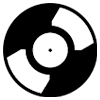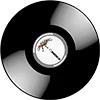
The history of Synth-Pop: from Kraftwerk and Depeche Mode to The Weeknd and Dua Lipa. The sound of synthesizers, the aesthetics of the 80s, and the new retro generation.
Synth-Pop is the music of the future, born from analog synthesizers and digital dreams. It’s a genre that gave a voice to both machines and the human heart — simultaneously. It transformed pop music, made electronic sound mainstream, and created the cult of 1980s aesthetics that keeps coming back again and again.
Brief History of Synth-Pop
-
Late 1970s:
Inspired by krautrock and the experiments of Kraftwerk, British bands began using synthesizers as their main instruments.
Early pioneers — The Human League, Ultravox, Gary Numan -
1980s — The Golden Era:
Synthesizers take center stage in global pop culture.
Key figures of the scene:-
A-ha
-
Eurythmics
-
Yazoo
Their videos became MTV legends, and their looks — style icons.
-
1990s–2000s:
Synth-pop gives way to other genres but continues in the works of Erasure, Goldfrapp, Ladytron. The electronic scene moves underground. -
2010s–2020+ — Retro Revival:
-
Global nostalgia sparks the rise of synthwave and retrowave
-
The Weeknd, Dua Lipa, Chvrches, Roosevelt bring synthesizers back to the charts
-
TikTok and YouTube overflow with 80s aesthetics
-
Sound Characteristics of Synth-Pop
-
Main instruments — analog and digital synthesizers
-
Soft, warm, electronic sound with melancholic or dreamy melodies
-
Vocals — often processed, romantic or detached
-
Tempo: from mid-tempo to danceable
-
Themes: love, loneliness, technology, dreams, urban life
Subgenres and Branches
| Subgenre | Description | Artists |
|---|---|---|
| Electropop | More modern, pop-oriented sound | Robyn, La Roux, Owl City |
| Synthwave | 80s nostalgia and retro-futurism | Kavinsky, FM-84, The Midnight |
| Darkwave | Darker, more gothic and emotional | Cold Cave, TR/ST |
| Futurepop | Fusion of synth-pop with EBM and trance | VNV Nation, Assemblage 23 |
Synth-Pop in Culture
-
1980s aesthetics: neon lights, VHS, leather jackets, retro cars
-
Films: Drive, Stranger Things, Blade Runner 2049
-
Design influence: pixel art, glitch graphics, retro-futurism
-
TikTok: viral retro-track trends (Running Up That Hill, Take On Me)
Modern Artists
-
The Weeknd (Blinding Lights — global retro anthem)
-
Dua Lipa (Future Nostalgia — next-generation synth-pop)
-
Chvrches, Roosevelt, Empathy Test, M83
-
Boy Harsher, Desire, Drab Majesty — synth-pop meets darkwave
Interesting Facts
-
Take On Me (A-ha) — one of the most iconic music videos ever made
-
Depeche Mode — among the most successful bands in history, with over 100 million records sold
-
Pet Shop Boys — the most commercially successful duo in British pop history
-
Many synth-pop tracks were created using just one synthesizer: Yamaha DX7, Roland Juno-60, Moog
-
TikTok revived synth-pop in the charts: “Running Up That Hill” (Kate Bush) returned to Billboard after 37 years
Conclusion
Synth-Pop is not just a genre — it’s an era where machines learned to feel and people learned to dream through electronic rhythms. It became a symbol of technological optimism and digital-age romance, where a cold synthesizer can express the warmest emotions.
From the early chords of Kraftwerk and Depeche Mode to modern hits by The Weeknd and Dua Lipa — synth-pop has proven that music made of electricity and circuits can be alive and full of soul. Its aesthetics are an eternal return to neon light, VHS nostalgia, and the dream of a future that’s always near.
Today, synth-pop is experiencing a second birth — not as retro, but as a new wave of inspiration. It’s the music that connects generations, blurs the line between past and future, and reminds us: technology is just a tool when the human heart still beats to the rhythm of the synthesizer.

